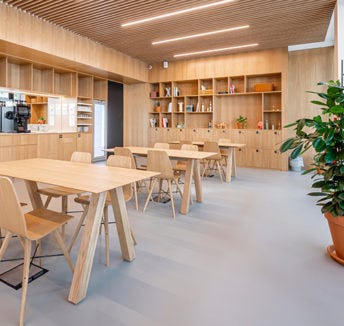
With the rise of hybrid working, tools that help us to work together online are booming.
Now that hybrid working has become mainstream, virtual collaboration will play a vital role in how businesses work with employees and freelancers, from start-ups and small companies to major global enterprises.
As people divide their time between home, a local workspace and a head office, shared online platforms, from virtual whiteboard Miro to workflow platform Monday, are needed to help modern professionals be more creative and communicative from wherever they happen to be.
“According to our research, about 98% of meetings will have at least one remote participant in the hybrid world,” says Chintan Patel, Chief Technologist at Cisco UK&I. “So there’s an onus on organisations to put in the digital infrastructure to help employees securely communicate and collaborate from home – and that’s going to have to be a little more thought out than just a webcam on a laptop.”
The metaverse is coming
Big tech companies Microsoft and Meta (formerly Facebook), as well as others, are currently promoting the transformative concept of a ‘metaverse’. Over the coming years, they believe that, rather than spending our lives looking at our screens, we will instead spend time effectively inside those screens, working, playing or just hanging out in an alternative universe via virtual reality headsets and augmented reality glasses.
Four pros of virtual collaboration in a hybrid world
- In December 2019, Zoom was seeing around ten million meeting participants each day. By May 2020, as worldwide lockdowns took hold, this figure had risen to 200 million. A month later, it was 300 million. As we were told to work from home, many of us wondered if we could still do our jobs just as effectively. Not only was it possible, but we didn’t have to find a meeting room. Suddenly we could do it online and at short notice.
- The widespread roll-out of hybrid working is prompting a boom in top notch tech solutions, supporting seamless collaboration for remote workers. Cisco, for example, has developed dedicated home devices with HD video and audio aimed at offering the same high quality as office screens. And it’s also incorporated various new features into its WebEx video-conferencing platform to try and give all meeting participants an equal voice. One, called Roundtable, allows hosts to assign a speaking order for all attendees, and mutes others until it’s their turn.
- Not everybody has access to the same quality tech and home working has often led to frustrations with unreliable Wi-Fi or poor quality video calls. (One survey reported that 84% of home workers suffered from an unreliable internet connection during the early stages of the pandemic.) Via the hybrid model, employees are given access to professional, well-equipped workspaces with a safe and secure IT infrastructure and business-grade Wi-Fi.
- High-quality tech will continue to be the foundation for hybrid working, and the widespread roll-out of 5G will further fuel this shift. By 2025, mobile network industry organisation GSMA says that 5G is likely to be available to a third of the world’s population. When this is the case, mobile virtual collaboration – and entry to the metaverse – will be seamless and high quality with no lag.
The rise of virtual collaboration is one of ten trends identified in IWG’s white paper, The Future of Work: a trends forecast for 2022.
Find out how Spaces can help you and your company transition towards a hybrid solution.
Enjoy this? You might also like these Spaces magazine stories:
Share this article
 Read now The trends shaping work in 2022: productivity metrics
Read now The trends shaping work in 2022: productivity metrics
 Read now What every business must know to make 2022 a success
Read now What every business must know to make 2022 a success